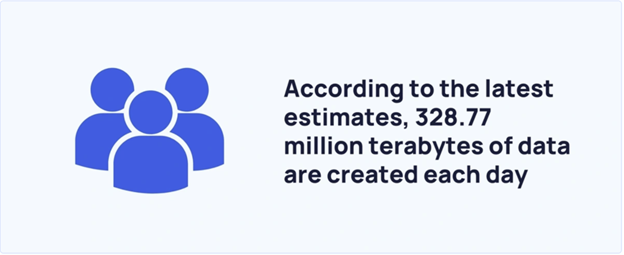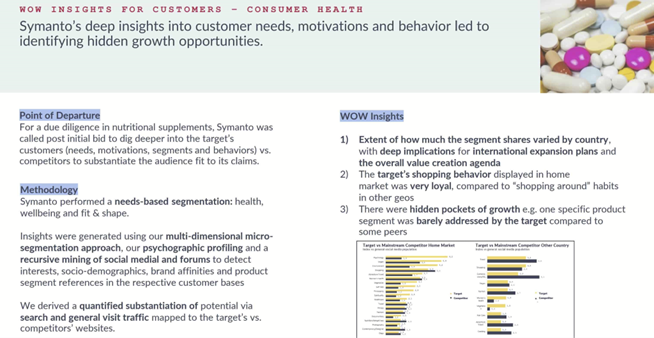In a fiercely competitive and continuously changing market, companies do their best to conserve their competitiveness and earn an edge. Counting on meaningful consumer insights has the power to make or break a business’s success.
And is the key to breaking out of the marketing humdrum and finding a new fresh way to connect with your audience from a new angle.
Maybe those assumptions you have about your customer base are unfounded, maybe there’s a whole segment of your audience that you haven’t acknowledged or capitalised on.
In marketing, consumer insights are the difference between talking to your customers and communicating with them. Ever felt patronised by a promo or pigeonholed by an ad? These are examples of marketing efforts that fail to connect with your customers.
A bit of extra knowledge about who you are talking to, and greater precision in your targeting can take your marketing strategy from misjudged to on-point.
So, what exactly are consumer insights? How do you gather them? And how can that information power your marketing strategy?
Read on to find out.
What Are Consumer Insights?
Consumer insights are the result of carefully evaluating qualitative and quantitative research regarding your existing and potential customers. It’s about understanding the “why” behind customer decisions and actions.
Insights are not the data points themselves, they are the conclusions you can drawfrom your research based on that data. These insights are collected from many sources such as customer feedback, customer surveys and interviews, social media, customer care and transactions data.
Consumer insights research and analysis can be conducted in-house by your marketing team or by a hired agency. Anyway, you need to make sure that you have the correct analysis tools and personnel with high proficiency in data analysis.
Why Are Consumer Insights Useful?
The general purpose of consumer insights is to inform your business decisions. It takes the guesswork out of understanding what your consumers want, and how they’ll react to your marketing messaging or product development decisions.
There are two main ways consumer insights help:
- They can either confirm or disprove assumptions you have about your customers. You might think you know what your customers need and want, but have you put those assumptions to the test? Maybe you’re basing your strategy on a false narrative, or you’ve overestimated the number of your customers who can relate to or are interested in your messaging.
- They enable you to hone in on the psychographic and behavioural distinctions between the different segments of your audience.
And allow you to get the right answer to questions like:
- What are your customers’ feelings about your products/services?
- What is your brand perception among your target clients?
- How to improve your marketing messaging?
- What are your success chances if you enter a new market segment?
- Which is the best way to upsell to existing clients?
- How to improve conversion rates?
- Why sales are decreasing for a certain product/service?
- Why are so many customer complaints for a specific product?
You’ve segmented your audience by their demographic traits (age, location, sex, etc.) or even by their behaviour on your website (page visits, purchases, time spent on each page) but this does very little to explain their needs and wants.
consumer insights can help you get to the root of what makes different segments of your audience tick. And can support you in optimising your marketing efforts and employing marketing budgets in a more efficient manner.
How do consumer insights generate success?
In a word, consumer insights are the (not-so-obvious) fuel that drives a business’s growth forward.
Based on reliable insights concerning their audience companies are able to:
- Anticipate new trends in the market.
- Expand to new markets or market segments.
- Improve the customer lifetime value (listen to the voice of the customer).
- Spot early emerging opportunities.
- Adapt strategies to encounter the clients’ requirements.
- Gain an edge on the competition.
- Enhance customer experience via personalisation.
- Increase the customers’ loyalty towards the brand.
- Decide on products’ price levels.
- Sustain future growth thanks to a loyal audience.
How to Find Consumer Insights?
Before gathering data for your consumer insights you need to know what is your goal. The aim of consumer insights is to be able to use the information to take action and make your marketing, sales or overall strategy evolve for the better.
There’s no use sifting through a ton of research without first knowing what you’re trying to find. Start with an assumption, and then prepare to have that assumption challenged by your results.
Now it’s time to start gathering data for analysis.
Here is how:
1. Customer Feedback Surveys
One way to find out what your customers need and want is to ask them straight through a customer feedback survey. It can be realised via email, in-store or through your company’s website.
If you choose this option, make sure to include a mixture of quantitative and qualitative questions. Surveys can be restrictive and using this method alone, you’re unlikely to uncover valuable gems that other methods still hide.
Another challenge to using this method is that customers may not give you the full picture, providing the minimum required to complete the survey. Incentivised customers might also give you positively skewed feedback.
2. Customer Interviews and Focus Groups
Compared to customer feedback surveys, customer interviews give you a more in-depth and less derivative set of results. Thanks to video conferencing, face-to-face (or Zoom-to-Zoom) interviews are more accessible than ever.
The benefit of an in-person interview with open-ended questions is that it’s easy to encourage respondents to speak openly, honestly, and in-depth about their experiences and opinions.
Still, there are downsides. It’s time and resource-intensive to collect this data with a sufficiently large sample size. Plus, the analysis of large sets of qualitative data is also a challenge.
AI text analysis tools have advanced tremendously, and now there is technology available on the market to automatically analyse and derive insights from any amount of qualitative data.
Simply feed your interview transcripts into the tool to extract relevant and meaningful insights from your full data set within minutes.
3. Social Listening
There is an unfathomably large amount of data out there. It’s estimated that in 2025, 181 zettabytes will be generated.

Source: Explodingtopics
Social media is a source full of detailed, qualitative data about your brand, your competitors’ brands, and your target audience. The beauty is that it’s all free and easy to access.
Your challenge is to find a text analysis tool that can turn vast amounts of qualitative data into useful insights.
This is where the Symanto Insights Platform excels. The Symanto Insights Platform is connected to 75 online portals including review sites and social media channels.
You can also feed in any data set that contains unstructured textual data (for example from your CRM platform) in the form of an Excel or CSV file.
Within minutes the Symanto Insights Platform will structure the data into intuitive and easy-to-understand data visualisations.
Discover what your customers (or potential customers) are talking about and explore conversations online based on the topic to get a real understanding of each issue discussed online.
What distinguishes the Symanto Insights Platform from other social listening tools is its ability to provide insights into the psychographic profile of the authors. What drives them? What communication styles will they respond best to?
The Symanto Insights Platform delivers the consumer insights necessary to perfect your marketing messaging.
Whichever option you chose, remember that the answer to finding truly useful and pertinent insights is to:
- know what it is that you’re looking for
- look for quality insights that depict who your customers are and what they want.
To get started with the Symanto Insights Platform or to find out more, get in touch or book a free personalised demonstration.
Purchase and Sales Data Analysis
The information gathered by your sales team regarding clients’ purchase habits and patterns is a treasure trove of hidden insights.
Advanced market intelligence tools have capabilities to track customers’ buying habits, spot cross-selling opportunities, discover what makes popular certain products, how to promote upselling offers, etc.
What Are the Types of Consumer Insights?
Demographic insights
These are the primary details that are gathered and concentrate on customer characteristics like gender, age, geolocation, education, job, and income.
Knowing the demographics of your target audience is fundamental for marketing strategies and messaging. And for creating personalised products and services that are of interest to certain audience segments.
Psychographic insights
Psychographics analyses customers’ personality characteristics and their tonality based on the texts they write. As such psychographic insights go beyond the surface and dig into customers’ interests, values, attitudes, and lifestyle preferences.
Plus, these insights combined with sentiment analysis and customers’ opinions segment the audience into four major segments:
- Critics
- At-risk
- Loyalists
- Ambassadors
This type of consumer insight gets into the limelight the elements that incite clients to take action. And help businesses to hone their campaigns and bring them to an emotionally resonant level.
Check this case study that reveals how Symanto’s valuable insights regarding customer motivations, segments, needs, and behaviour created the bases for spotting new growth opportunities.
For a client active in the nutritional supplements industry, Symanto analysed their target audience, segment it and generated insights.
A segmentation based on needs was put in place:
- Health
- Well-being
- Fit and shape
To generate advanced insights that were requested Symanto’s team used the following:
- A proprietary multi-dimensional micro-segmentation approach.
- Psychographic profiling.
- Mining data from social media to gauge interests, brand affinities, socio-demographics, and product references.
Consumer insights examples – the WOW insights revealed were:
- Customer segments varied highly by country (valuable insights for the international expansion strategy).
- Opportunities for growth in product segments not covered yet.
- The shopping behaviour of the client company audience was “loyal” in their home country and “shopping around” in other regions.

Behavioural insights
They explore clients’ modality of interaction with websites, products, services, marketing materials and campaigns.
Behavioural insights refer to browsing habits, engagement metrics, purchase patterns and frequency.
Based on these insights companies are able to optimise their sales funnels and improve the customer experience.
Attitudinal insights
These insights refer to customers’ perceptions and opinions in relation to a company’s products and/or services.
Clearly understanding the clients’ attitude offers hints for businesses to reinforce their value proposition, and unique selling points, and detect zones for improvement.
Armed with such advanced insights and knowledge, businesses are able to craft remarkable experiences and build solid long-term relationships with their customers.
Consumer Insights’ Major Impact on Strategy
They help shape the following areas:
Products and services amelioration
- Identify how products/services may be improved
- Based on a deeper understanding of customers’ preferences, what they like and dislike to update offerings.
- Consumer insights deliver advanced reliable feedback on how products may get better and how to innovate them further.
- Customise and personalise
- Tailor products and/or services to specific preferences to respond better to clients’ needs and gain their loyalty.
- Propose tailor-made experiences and personalised recommendations for products.
Better-targeted marketing campaigns
- Superior segmentation strategies
- Organise customers on segments considering advanced consumer insights like demographics, psychographics, and behaviours.
- To maximise the ROI of each campaign, craft personalised marketing messages for each relevant market segment.
- Create world-class content
- Make the most of the consumer insights gathered and implement in your content creation process the findings to increase their relevance.
Craft pieces of content that cater for the exact needs of your target audience.
Perfect the Customer Experience
- Aim for a stellar customer service
- Respond promptly to customers’ inquiries to improve their satisfaction and ultimately retention.
- Issues gathered by customer service are the basis for actionable insights that detect pain points during the customer journey. Solving them will lead to hassle-free interactions.
- Update and optimise the user interface
- Analyse in detail the customer behaviour to ensure smooth navigation and optimise accordingly the website interface and that of the app (if you have one).
- Streamline user experience to increase conversions.
Enhance your competitive advantage thanks to consumer insights
- Preview market trends and anticipate clients’ preferences
- Considering the actionable consumer insights obtained, forecast market trends to get an edge over the competition.
- Be agile and adaptable to keep pace with the ever-changing clients’ demands.
- Identify the uncovered gaps in your market
- Spot the needs that don’t have the corresponding products present on the market and create them to fill those gaps.
- Consumer insights have the potential to be the base for innovations and new products.
How Consumer Insights Are Collected and Analysed?
Consumer insights form the foundation on which data-based decisions rely. And consequently, the quality of business and marketing strategies.
To extract the entire value that these insights provide, companies count on several market intelligence techniques and AI-powered tools.
Main methods for data gathering
Offline and Online Surveys.
Surveys are a traditional way of collecting customer data that proved its value over time.
No matter how they are conducted online via emails or websites or offline via interviews or focus groups, surveys are a solid method used by companies to get their questions answered.
No need to mention that social media revolutionised the way companies interact with their customers and potential clients.
And together with it a cohort of social media listening tools that empower businesses with advanced capabilities of monitoring engagement, conversations, sentiments, and mentions of their products and brands.
Analysing all this data helps the decision-makers tremendously as they can access in real-time reliable insights regarding customers’ preferences and expectations.
Customer Relationship Management Systems
These systems store loads of data regarding customers’ purchase history, preferences, interactions with the brand, etc.
Categorising this information allows companies to obtain a detailed overview of their client database. Segment them based on certain criteria and interact with them in a personalised manner.
Converting raw data into actionable and valuable insights
Cleaning and validating data. Since raw data gathered from multiple sources may be inconsistent or erroneous, it needs to be cleaned, curated and verified. Before entering the analysis stage.
Cross-referencing data and integrating it. Data is collected from numerous systems and channels, so their integration and cross-referencing are needed to obtain a detailed overview and meaningful insights.
Techniques for data analysis. To extract actionable insights from data a variety of technics are used like prescriptive analytics, descriptive analytics or predictive.
Prescriptive analytics aims to deliver recommendations for the strategic level.
Descriptive analytics is responsible for uncovering historical customer behaviour.
Predictive analytics is in charge of previewing future developments and trends.
Consumer Insights Limitations
The value of consumer insights is incontestable, but still, there are some challenges related to their usage.
Some of these limitations are:
- Data bias and problems with sampling. They appear for example when specific segments of customers are overrepresented.
- Incorrect interpretation of insights. It translates into increased costs and wrong fundament for strategies.
- Find the correct balance between statistical data (quantitative) and qualitative data. Because that digs deeper into uncovering angles and nuances of clients’ feedback.
In an increasingly competitive environment, companies cannot afford to ignore consumer insights. Since they have the power to detect hidden opportunities and fuel growth. The alternative is losing ground in front of the competition.

